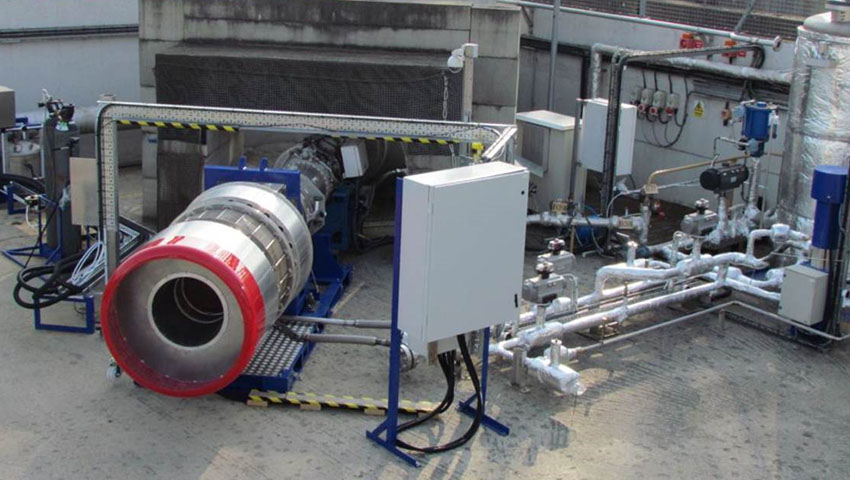ESA and UKSA have finalised the preliminary design for the demonstrator engine core of the Synergetic Air-Breathing Rocket Engine (SABRE), which Reaction Engines will use to undertake ground-based testing at test facility at Westcott, Buckinghamshire, which is currently under construction.
Mark Ford, head of ESA’s propulsion engineering section, said, "The positive conclusion of our preliminary design review marks a major milestone in SABRE development. It confirms the test version of this revolutionary new class of engine is ready for implementation."
SABRE is uniquely designed to scoop up atmospheric air during the initial part of its ascent to space at up to five times the speed of sound. At about 25 kilometres it would then switch to pure rocket mode for its final climb to orbit.
In the future, SABRE could serve as the basis of a reusable launch vehicle that operates like an aircraft. Because it would carry much less bulky onboard oxygen supplies, such a vehicle could deliver the same payload to orbit with half the vehicle mass of current launchers, as well as potentially offering a large reduction in cost and higher launch rate.
The SABRE system is similar in design and function to the scramjet rocket engine design developed by a joint British and Australian team including QinetiQ and the University of Queensland, which successfully demonstrated a scramjet working in an atmospheric test.
This successful test paved the way for collaboration between Australia's Defence Science and Technology Organisation, now Defence Science and Technology Group (DSTG) and the US Defense Advanced Research Project Agency (DARPA) on the development and successful testing of a Mach 10 scramjet vehicle.
ESA’s involvement began in 2010 with an independent review of SABRE’s viability, opening the way to UK government investment. Reaction Engines launched a significant new element of its development program in October 2016 to design, build and demonstrate a SABRE engine core.
The test item consists of an engine core, which is a key module of the complete SABRE engine, but without the pre-cooler and rocket nozzle in place. Following completion of this core design and development activity major elements of the world’s first air-breathing engine capable of accelerating from zero to Mach 5 will have been demonstrated.
The complete air-breathing core demonstrator will be fully representative of the SABRE thermodynamic core cycle, fuelled by liquid hydrogen, and will contain heat exchangers plus combustion and turbo-machinery modules.
Chris Castelli, director of programmes at UKSA, said, "As the home of the jet engine, the UK has a rich aerospace heritage and world-renowned skills and expertise. This is an exciting landmark for Reaction Engines in the development of its SABRE engine, which could revolutionise both access to space and international travel by powering aircraft to five times the speed of sound."
Richard Varvill, chief technology officer of Reaction Engines, said, "One of the great advantages of the SABRE propulsion concept is that it is totally modular from both design and operational perspectives. Therefore it is possible to subject each of the key components of the engine to rigorous ground testing, which fully mimic the operational conditions the engine will face up to Mach 5 flight at 25-kilometre altitude."

